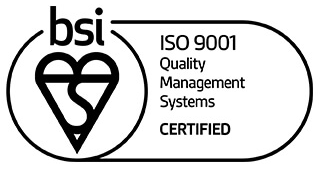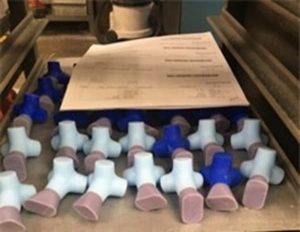The Benefits of 3D Printing Rapid Prototyping in Custom Part Manufacturing
Custom part design for specialised applications presents numerous challenges. Innovative technologies create opportunities for bespoke parts designed to fulfil unique roles and address specific requirements. However, this progress results in heightened challenges for designers and manufacturers striving to cater to these emerging demands.
Striving for accuracy in testing these designs comes with inherent risks, as both functionality and durability must be flawlessly integrated. Ensuring the success of the final design requires meticulous evaluation through reliable testing processes such as 3D rapid prototyping. Read on to discover why we developed this popular analytical process for custom part designers.
Why Is 3D Rapid Prototyping Popular Among Bespoke Part Designers?
Breaking into new frontiers with custom parts necessitates the adoption of novel strategies and techniques. Designers must accommodate complex features and diverse materials, presenting steep learning curves requiring mastery.
Manufacturers also face pressures to deliver precision-engineered, cost-effective solutions, balancing tight deadlines without compromising quality. Despite the hurdles, embracing these challenges provides immense value for cutting-edge applications in the long run.
Prototyping has gained popularity in recent years to counter these complexities. This method allows designers to create physical models for evaluating design suitability. However, prototyping is not without flaws; increased lead times and costs are often cited as significant drawbacks.
Modern designers recognise the limitations of traditional prototyping and seek innovative alternatives. As a result, many now invest in 3D printing for metal casting as their chosen form of prototyping, achieving significant cost and time efficiencies. By embracing this cutting-edge technology, designers can address design challenges while optimising development processes.
What Is Our 3D Wax Printing Prototyping Process?
Below is a detailed outline of our 3D rapid prototyping process for crafting wax prototypes, which is essential for the design of components intended for metal casting.
Initial CAD Design Optimisation
We begin with the client's digital designs, either supplied by them or developed by our skilled design team using Computer-Aided Design (CAD) software. Should clients require it, we also offer a 3D model generation service for creating suitable 3D models for 3D printing and investment casting.
Digital Slicing and Model Preparation
We import the CAD file into specialised slicing software that turns the model into ultra-thin layers, typically ranging from 0.002 to 0.003 inches in thickness. The sliced model is then prepped for printing.
3D Wax Printing of Prototype Parts
For best printing results, we melt wax material and fill the printer's reservoir. Our ThermoJet wax printer utilises a print head to deposit fine layers of molten wax onto a build platform. The print head moves both horizontally and vertically, adhering to the instructions provided by the sliced model.
Our ThermoJet wax printer constructs the wax model layer-by-layer, fusing each layer with the preceding one as they cool and solidify. This precise layering process proceeds until the entire model is completed. When necessary, we introduce support structures during the printing process to maintain stability in overhanging or delicate features. Once printing concludes, these structures can easily be removed.
Prototype Evaluation, Testing and Review
We meticulously inspect the wax model for any flaws or deviations, vigilantly verifying dimensions, details, and functionality to ensure design accuracy. The wax model ultimately functions as a high-calibre prototype for appraising and testing the intended metal casting. Our design clients will then envision and perfect their product concepts before investing in expensive tooling for alternative processes such as die casting.
General Benefits of Rapid Prototyping for Custom Designers
- Speed and Efficiency: We harness 3D printing to expedite product development through rapid prototyping. Our 3D printing for casting service showcases swift product turnaround and rapid part manufacture using the ThermoJet wax modelling system.
- Cost Savings: Utilising 3D printing for part manufacturing brings economic benefits by shortening the time to prototype, consequently reducing development costs. At Dean Group, we minimise expenses by testing designs prior to full product development, preventing potential issues and re-design costs.
- Design Flexibility: Our experience demonstrates 3D printing's vast design possibilities. This technology allows us to conduct comprehensive design testing and compare alternative concept designs supported by authentic CAD data.
- Improved Quality Control: We ensure product validation before large-scale implementation through 3D printing. Dean Group's rapid prototyping process exemplifies the meticulous quality assurance measures we deploy before moving to full production.
- Sustainability: 3D printing contributes to waste reduction and a diminished carbon footprint. Dean Group's adoption of this transformative technology aligns with eco-conscious manufacturing practices.
Contextual Example: Cloud Cities of Barcelona
Cloud Cities Barcelona is a permanent, free-standing artwork by Tomás Saraceno, located at the top of Mirador Torre Glòries. The installation features 1,200 polycarbonate panels, 7,000 meters of wire rope, and 10,000 lengths of cabling, which all require high-quality metal nodes to connect the components securely. We were tasked with designing, testing, casting, and machining these nodes under tight deadlines.
To overcome this challenge, we employed our rapid prototyping techniques. The process began by creating wax versions of the required node designs, allowing for quick assessments and design improvements. This service not only expedites initial concept development but also significantly reduces lead times from months to weeks.
Once the primary node design was approved, the team developed twelve different node variations to ensure the installation's structural integrity without compromising on aesthetics. By using simulation software, they were able to analyse and predict the nodes' performance under various stress conditions before finalising the successful designs.
This prototyping approach ultimately resulted in over 6,000 node connectors manufactured and machined to the required standards, ensuring both the safety and visual appeal of this innovative architectural installation.
Efficient Rapid Prototyping at Dean Group
With over 50 years of experience, we have provided accurate prototypes to many businesses nationwide, and we know the importance of early issue detection in rapid casting prototyping. We embrace 3D printing as the future of prototype manufacturing.
Explore our other case studies for other examples of where this service has helped bespoke designers. Or contact us today to discuss what our rapid prototyping will do for your project.
Registered in England VAT No: 146307478 Company Registration No: 1062820









